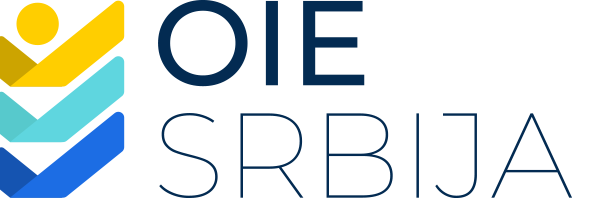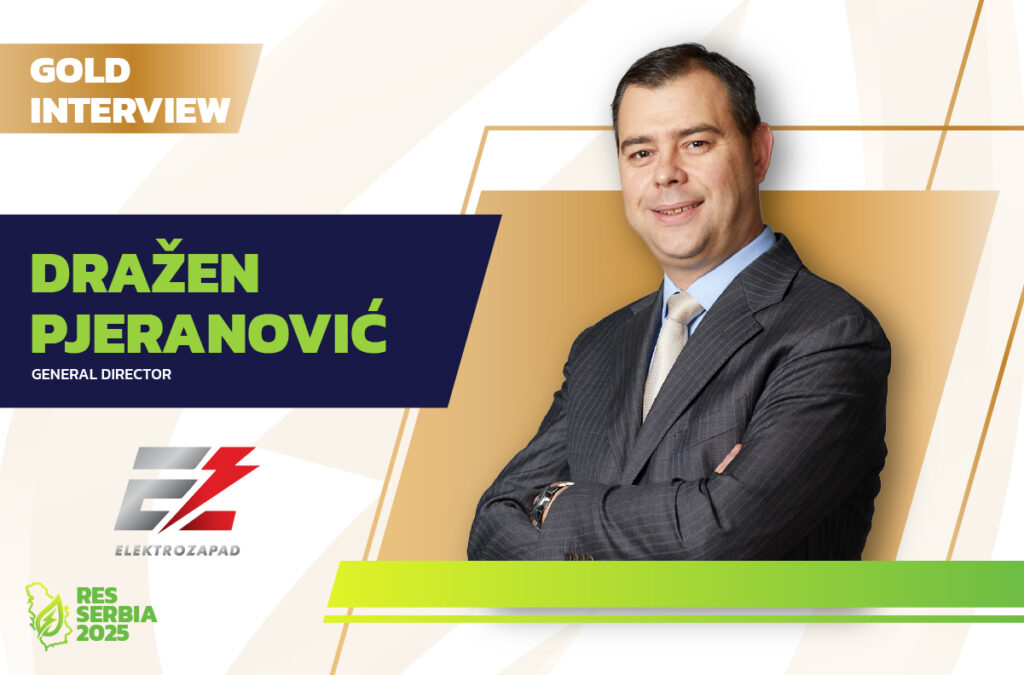Since its founding in 2015, Elektrozapad has grown into one of the most reliable partners in the implementation of renewable energy projects in Serbia.
With strong engineering capabilities, extensive experience, and a clear vision, the company has participated in the construction of key wind farms such as Pupin, Kovačica, and Čibuk 1, and is currently working on the Čibuk 2 project. In addition to the renewable energy sector, Elektrozapad is also active in strategic infrastructure projects, including Beogrid50 and Tiršova 2.
As Dražen Pjeranović, General Director of Elektrozapad, shared in a Golden Interview for RES Serbia, their approach is based on a balance of youth and experience, technical precision, and the ability to offer investors complete “turnkey” solutions — from design to commissioning.
In recent years, Elektrozapad has positioned itself as a leader in the implementation of RES projects, especially wind parks. What are some of the renewable energy projects that the company has participated in so far and where is it currently present on the construction site?
Since its establishment in 2015, Elektrozapad has been involved in the implementation of RES projects, primarily wind farms. In the first place, I would like to single out the Pupin wind farm, where we were a member of the consortium of BOP contractors, and we also took part in the part of electrical works on the Kovačica wind park and the Čibuk 1 wind park.
We are currently engaged in the Čibuk 2 wind park project, where we are in charge of building a network of medium voltage and fiber optic cables in the wind farm.
Can you single out projects outside the RES sector in which you are engaged, and which are particularly important or representative to you?
Among the many current projects, which are all important to us, I would single out the Project for the construction of a cabinet of a complete relay protection and control system, own consumption and metering for SS 400/110 kV Beogrid50, which is part of the Belgrade 2025 project, where we are a member of the consortium together with Siemens, and the investor is EMS a.d. Then, the project of reconstruction of the relay protection system in several high-voltage plants, for the same investor.
In the sector of commercial and industrial facilities, currently the largest projects on which we are engaged is the execution of electrical installation works and installation of equipment on the facilities of the construction of UDC “Tiršova 2” and the reconstruction of SRC “Radnički” in Belgrade.
What services can Elektrozapad provide to investors in renewable energy sources? What is the scope of services that you can implement on your own, and that require partnership or work in a consortium with other companies?
As the name suggests, Elektrozapad is a company specializing in all types of electrical works, and in that sense it can independently carry out the complete design, procurement, installation, testing and commissioning of all systems related to the connection of wind turbines, or some other renewable source, and the transmission or distribution system network. Specifically, in the case of wind parks, this means the cable network, the wind park substation, the connection and distribution plant and the connecting overhead or cable line.
As far as construction works are concerned, as an example we cite the partnership with WD Concord West at the Pupin wind park, where WD Concord West as a construction company oversaw the foundations of the wind turbines, crane platforms and access roads.
What are the biggest challenges that companies like Elektrozapad face when building wind parks and solar power plants, both technically and regulatory?
For companies such as Elektrozapad, the biggest challenges in the construction of wind parks and solar power plants, in technical terms, are, first of all, the large volume of infrastructure, then the complex integration into the transmission and distribution system.
Also, the challenge, but also the responsibility, is the application of the most modern standards, with special attention to the quality of work, which must be at the highest level.
On RES projects, the desire and intention of the investor to put the facility to commercial use as soon as possible is particularly expressed, so deadlines are a special challenge, because the works are carried out over a large area, often in difficult weather and geological conditions.
In addition, obtaining all permits and approvals, adapting to network codes, compliance with the requirements of EMS, EPS Distribution and system stability regulators, relations with the local community, etc. They reflect the administrative complexity that investors and contractors face and solve together.
Bearing in mind that the Law on Planning and Construction has transferred part of the process of obtaining permits to contractors, how does Elektrozapad manage in performing this segment of work?
According to our current practice, internal organization and good cooperation with designers and investors are very important.
Most of the responsibility for delays due to administrative delays now lies with the contractor. Elektrozapad has experts in its team who are familiar with the legal regulations of local government and the technical requirements of transmission and distribution network operators, so we are efficient in this segment as well.
Since the procedure is bureaucratically demanding, contractors who have experience, reputation and contacts, such as Elektrozapad, can offer the investor a “turnkey” solution.
Is it more of a challenge to build an electric power infrastructure for a wind park, or for another commercial or public facility? How do these processes differ?
Good question. Since we are engaged in all these projects, each of them has its own specificity. The construction of electric power infrastructure for a wind park is usually more demanding than for commercial or government facilities, because it involves a large volume of works – long cable routes, substations, connection to the transmission system and harmonization with the network operator. This is best reflected in the fact that you have 5 or more different building permits on a wind farm project.
Engineering staff is one of the greatest assets of the company Elektrozapad. How many companies, and staff, do you have at the moment?
I agree with you that engineers are the backbone of the development of our company and I am proud of that fact, since I am an engineer by profession.
In order not to list everything, our company, among others, has all the necessary licenses for the design and construction of high and medium voltage electrical installations for facilities for the production of energy from renewable sources with a capacity of 10 MW and more.
As far as personal licenses are concerned, our engineers have all the necessary licenses for the design and execution of works in the field of electric power, low, medium and high voltage, as well as for telecommunication installations.
Do you prefer to hire young graduates that you can shape through practice, or experienced engineers with already formed expertise? How do you balance these two approaches?
The answer lies in this second question of yours: the best solution is a balance, that is, a combination of youth and experience. We also need experienced professionals, but we also practice to give young colleagues a chance, enabling them to build their careers and gain valuable knowledge and rich experience through participation in large infrastructure projects.


